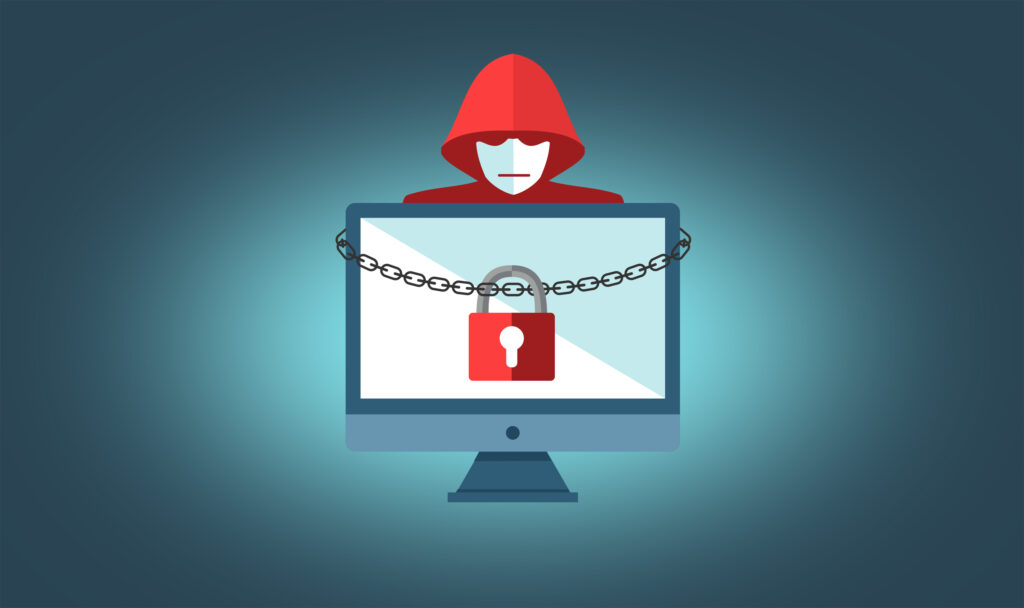Ransomware attacks are becoming a growing concern for businesses of all sizes. These attacks involve taking control of a company’s systems, encrypting their data, and demanding payment.
In this blog post, we’ll look at what exactly ransomware is, the types you can encounter, and how to prevent it efficiently.

What is Ransomware?
Ransomware is a type of malware (malicious software) that uses encryption to hold a victim’s information at ransom. The company’s critical data is encrypted, which blocks them from accessing files, databases, and applications. Then, a ransom fee is demanded to provide access, usually with a deadline. If the organization doesn’t pay in time, the ransom increases, or the data is gone forever.
Each user of the environment has a personal responsibility of being alert to any potential threats coming from unknown sources, as ransomware can be designed to spread across the network and target database and file servers which can quickly paralyze an entire company. It’s a growing threat that inflicts significant damage and expenses for all organizations, often originating from small-scale sources, such as single-user activity causing exposure.
Types of Ransomware
- Scareware – a typical form of ransomware that fools users by pretending to detect malware on the victim’s computer and showing a fake warning message. These attacks are usually disguised as an antivirus solution demanding payment to remove the nonexistent malware.
- Screen lockers – attacks that are designed to lock the victim out of their computer and prevent them from accessing any data and files. It displays a message that demands payment to unlock the computer.
- Encrypting ransomware/Crypto ransomware – a common ransomware attack that encrypts the victim’s files and then demands payment in exchange for a decryption key.
- Distributed Denial of Service extortion/DDoS extortion – attacks that threaten to launch a DDoS attack against the victim’s website or network unless a ransom is paid.
- Mobile ransomware – ransomware that targets devices like smartphones and tablets and then demands payment to unlock the device or decrypt the data.
- Doxware – a less common, but sophisticated type of ransomware that threatens to publish sensitive, confidential, or explicit information from the victim’s computer unless a ransom payment is fulfilled.
- Ransomware-as-a-Service/RaaS – ransomware programs that cybercriminals offer to other hackers or cyber-attackers that use them to target victims.
How to Prevent Ransomware Attacks?
If you want to avoid ransomware and reduce damage in case you’re attacked, you should follow these elementary prevention tips:
- Back-Up Your Data
Make sure you always have backup copies of your important files on an external hard drive and in the cloud if you don’t want to risk losing access to them. If a ransomware attack happened to you, you can wipe out your computer and devices and reinstall files from your backup. This helps protect your data, and you won’t be tempted to pay a ransom to the malware authors. Data backups won’t prevent ransomware, but they can lessen the consequences.
- Secure Your Backups
Ensure that your backup data is not available for modification or deletion from the systems where the data resides. Ransomware looks for backups and encrypts or deletes them so they can’t be recovered, so you need to use backup systems that don’t allow direct access to backup files.
- Use Security Software and Keep It Up to Date
Ensure all your computers and devices are protected with extensive security software. You should also update your devices’ software early and often, as bug patches are usually included with each update.
- Practice Safe Surfing
Don’t respond to text messages and emails from people you don’t know and download applications from trusted sources only. This is important because malware creators often use social engineering to get you to install dangerous files.
- Use Only Secure Networks
You should avoid using public Wi-Fi networks, as many of them are not secure, and cybercriminals can easily investigate your internet usage. Consider installing a VPN that provides a secure connection to the internet regardless of where you are.
- Stay Informed
Stay up to date on the most recent ransomware attacks so you can be aware of what to watch out for. In case you get a ransomware infection and haven’t backed up all your files, know that various tech companies made some decryption tools available to help victims.
- Implement a Security Awareness Program
Provide regular security awareness training for every employee of your company, which helps them avoid social engineering attacks, such as phishing. Conduct regular exercises and tests to ensure training is being followed.
Protect your business from the devastating effects of ransomware attacks with the help of our expert IT outsourcing services! Contact us today and learn more about how we can safeguard your systems and data against cyber threats.
- AI in IoT: Benefits, Components, and Impact - April 10, 2025
- AI and Low-Code/No-Code: A New Era of Development and Innovation - February 25, 2025
- The Ultimate Guide to AI in IT Support: The Tools, Benefits & Challenges You Must Know - February 11, 2025
